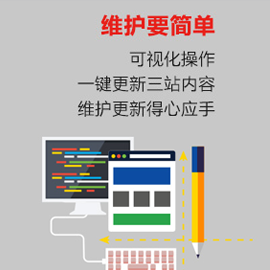Python中類(lèi)的內(nèi)置方法與繼承關(guān)系實(shí)例-創(chuàng)新互聯(lián)
1.類(lèi)的內(nèi)置方法
Python內(nèi)部類(lèi):
所謂內(nèi)部類(lèi),就是在類(lèi)的內(nèi)部定義的類(lèi),主要目的是為了更好的抽象現(xiàn)實(shí)世界。
例子:
汽車(chē)是一個(gè)類(lèi),汽車(chē)的底盤(pán)輪胎也可以抽象為類(lèi),將其定義到汽車(chē)內(nèi)中,而形成內(nèi)部類(lèi),
更好的描述汽車(chē)類(lèi),因?yàn)榈妆P(pán)輪胎是汽車(chē)的一部分。

內(nèi)部類(lèi)實(shí)例化方法:
方法1:直接使用外部類(lèi)調(diào)用內(nèi)部類(lèi)
方法2:先對(duì)外部類(lèi)進(jìn)行實(shí)例化,然后再實(shí)例化內(nèi)部類(lèi)
out_name = outclass_name()
in_name = out_name.inclass_name()
in_name.method()
#!/usr/bin/env python
#-*- coding:utf-8 -*-
class People(object):
color = 'yellow'
__age = 30 #私有屬性
class Chinese(object):
print("I am chinese")
def think(self):
self.color = "black"
print "I am a %s " % self.color
print ("I am a thinker")
print self.__age
def __talk(self):
print "I am talking with Tom"
@classmethod #調(diào)用類(lèi)的方法
def test(self):
print ("this is class method")
@staticmethod #調(diào)用類(lèi)的方法
def test1():
print ("this is static method")
jack = People.Chinese()
#!/usr/bin/env python
#-*- coding:utf-8 -*-
class People(object):
color = 'yellow'
__age = 30 #私有屬性
class Chinese(object):
name ="I am a Chinese."
def think(self):
self.color = "black"
print "I am a %s " % self.color
print ("I am a thinker")
print self.__age
def __talk(self):
print "I am talking with Tom"
@classmethod #調(diào)用類(lèi)的方法
def test(self):
print ("this is class method")
@staticmethod #調(diào)用類(lèi)的方法
def test1():
print ("this is static method")
jack = People.Chinese() #外部類(lèi)調(diào)用內(nèi)部類(lèi)
print jack.name #外部類(lèi)調(diào)用內(nèi)部類(lèi)對(duì)象
另一種方法,外部類(lèi)調(diào)用內(nèi)部類(lèi)對(duì)象
#!/usr/bin/env python
#-*- coding:utf-8 -*-
class People(object):
color = 'yellow'
__age = 30 #私有屬性
class Chinese(object):
name ="I am a Chinese."
def think(self):
self.color = "black"
print "I am a %s " % self.color
print ("I am a thinker")
print self.__age
def __talk(self):
print "I am talking with Tom"
@classmethod #調(diào)用類(lèi)的方法
def test(self):
print ("this is class method")
@staticmethod #調(diào)用類(lèi)的方法
def test1():
print ("this is static method")
ren = People() #實(shí)例化外部類(lèi)
jack = ren.Chinese() #實(shí)例化內(nèi)部類(lèi)
print jack.name #打印內(nèi)部類(lèi)屬性
或
print People.Chinese.name
print People.Chinese().name魔術(shù)方法:
str(self)
構(gòu)造函數(shù)與析構(gòu)函數(shù)
構(gòu)造函數(shù):
用于初始化類(lèi)的內(nèi)部狀態(tài),Python提供的構(gòu)造函數(shù)是__init__():
__init__():方法是可選的,如果不提供,python會(huì)給出一個(gè)默認(rèn)的__init__方法。析構(gòu)函數(shù):
用于釋放對(duì)象占用的資源,python提供的析構(gòu)函數(shù)是__del__():
__del__():也是可選的,如果不提供,則python會(huì)在后臺(tái)提供默認(rèn)析構(gòu)函數(shù)。構(gòu)造函數(shù)str
#!/usr/bin/env python
#-*- coding:utf-8 -*-
class People(object):
color = 'yellow'
__age = 30 #私有屬性
class Chinese(object):
name ="I am a Chinese."
def __str__(self):
return "This is People class"
def think(self):
self.color = "black"
print "I am a %s " % self.color
print ("I am a thinker")
print self.__age
def __talk(self):
print "I am talking with Tom"
@classmethod #調(diào)用類(lèi)的方法
def test(self):
print ("this is class method")
@staticmethod #調(diào)用類(lèi)的方法
def test1():
print ("this is static method")
ren = People() #實(shí)例化外部類(lèi)
print ren #默認(rèn)執(zhí)行__str__
__init__(self)初始化類(lèi):
#!/usr/bin/env python
#-*- coding:utf-8 -*-
class People(object):
color = 'yellow'
__age = 30 #私有屬性
class Chinese(object):
name ="I am a Chinese."
def __str__(self):
return "This is People class"
def __init__(self,c='white'): #類(lèi)實(shí)例化時(shí)自動(dòng)執(zhí)行
self.color = c
self.think()
def think(self):
self.color = "black"
print "I am a %s " % self.color
print ("I am a thinker")
print self.__age
def __talk(self):
print "I am talking with Tom"
@classmethod #調(diào)用類(lèi)的方法
def test(self):
print ("this is class method")
@staticmethod #調(diào)用類(lèi)的方法
def test1():
print ("this is static method")
jack = People('green')
ren = People() #實(shí)例化外部類(lèi)
print ren.color #通過(guò)對(duì)象訪問(wèn)屬性是初始化后的值
print People.color #通過(guò)類(lèi)訪問(wèn)還是原來(lái)的值
[root@localhost 20180110]# python test1.py
I am a black
I am a thinker
30
black
yellow
析構(gòu)函數(shù)__del__():釋放資源
#!/usr/bin/env python
#-*- coding:utf-8 -*-
class People(object):
color = 'yellow'
__age = 30 #私有屬性
class Chinese(object):
name ="I am a Chinese."
def __str__(self):
return "This is People class"
def __init__(self,c='white'): #類(lèi)實(shí)例化時(shí)自動(dòng)執(zhí)行
print ("initing...")
self.color = c
self.think()
f = open('test.py')
def think(self):
self.color = "black"
print "I am a %s " % self.color
print ("I am a thinker")
print self.__age
def __talk(self):
print "I am talking with Tom"
@classmethod #調(diào)用類(lèi)的方法
def test(self):
print ("this is class method")
@staticmethod #調(diào)用類(lèi)的方法
def test1():
print ("this is static method")
def __del__(self):
print ("del....")
self.f.close()
jack = People('green')
ren = People() #實(shí)例化外部類(lèi)
print ren.color #通過(guò)對(duì)象訪問(wèn)屬性是初始化后的值
print People.color #通過(guò)類(lèi)訪問(wèn)還是原來(lái)的值垃圾回收機(jī)制:
Python采用垃圾回收機(jī)制來(lái)清理不再使用的對(duì)象;python提供gc模塊釋放不再使用的對(duì)象。
Python采用“引用計(jì)數(shù)”的算法方式來(lái)處理回收,即:當(dāng)然某個(gè)對(duì)象在其作用域內(nèi)不再被其
他對(duì)象引用的時(shí)候,python就自動(dòng)化清除對(duì)象。
gc模塊collect()可以一次性收集所有待處理的對(duì)象(gc.collect)
#!/usr/bin/env python
#-*- coding:utf-8 -*-
class People(object):
color = 'yellow'
__age = 30 #私有屬性
class Chinese(object):
name ="I am a Chinese."
def __str__(self):
return "This is People class"
def __init__(self,c='white'): #類(lèi)實(shí)例化時(shí)自動(dòng)執(zhí)行
print ("initing...")
self.color = c
self.think()
f = open('test.py')
def think(self):
self.color = "black"
print "I am a %s " % self.color
print ("I am a thinker")
print self.__age
def __talk(self):
print "I am talking with Tom"
@classmethod #調(diào)用類(lèi)的方法
def test(self):
print ("this is class method")
@staticmethod #調(diào)用類(lèi)的方法
def test1():
print ("this is static method")
def __del__(self):
print ("del....")
self.f.close()
print gc.collect() 如果是0是沒(méi)有回收的。
jack = People('green')
ren = People() #實(shí)例化外部類(lèi)
print ren.color #通過(guò)對(duì)象訪問(wèn)屬性是初始化后的值
print People.color #通過(guò)類(lèi)訪問(wèn)還是原來(lái)的值2.類(lèi)的繼承
類(lèi)的繼承
繼承是面向?qū)ο蟮闹匾匦灾唬?
繼承關(guān)系繼承是相對(duì)兩個(gè)類(lèi)而言的父子關(guān)系
子類(lèi)繼承了父類(lèi)的所有公有屬性和方法,
繼承,實(shí)現(xiàn)了代碼重用使用繼承
繼承可以重用已經(jīng)存在的數(shù)據(jù)和行為,減少代碼的重復(fù)編寫(xiě),
Python在類(lèi)名后使用一對(duì)括號(hào)來(lái)表示繼承關(guān)系,括號(hào)中的即類(lèi)為父類(lèi)
class Myclass(ParentClass),
如果父類(lèi)定義了__init__方法,子類(lèi)必須顯式調(diào)用父類(lèi)的__init__方法,
ParentClass.__init__(self,[args...])
如果子類(lèi)需要擴(kuò)展父類(lèi)的行為,可以添加__init__方法的參數(shù).
#!/usr/bin/env python
#-*- coding:utf-8 -*-
class People(object):
color = 'yellow'
def think(self):
self.color = "black"
print "I am a %s " % self.color
print ("I am a thinker")
class Chinese(People):
pass
cn = Chinese()
print cn.color
cn.think()
父類(lèi)中有構(gòu)造函數(shù):
#!/usr/bin/env python
#-*- coding:utf-8 -*-
class People(object):
color = 'yellow'
def __init__(self):
print "Init..."
self.dwell = 'Earth'
def think(self):
print "I am a %s " % self.color
print ("I am a thinker")
class Chinese(People):
pass
cn = Chinese()
print cn.dwell
cn.think()
參數(shù)大于兩個(gè):
Super 函數(shù)
#!/usr/bin/env python
#-*- coding:utf-8 -*-
class People(object):
color = 'yellow'
def __init__(self,c):
print "Init..."
self.dwell = 'Earth'
def think(self):
print "I am a %s " % self.color
print ("I am a thinker")
class Chinese(People):
def __init__(self):
People.__init__(self,'red')
pass
cn = Chinese()
class A(object):
def __init__(self):
print "enter A"
print "leave A"
class B(object):
def __init__(self):
print "enter B"
super(B,self),__init__()
print "leave B"
b = B()
#!/usr/bin/env python
#-*- coding:utf-8 -*-
class People(object):
color = 'yellow'
def __init__(self,c):
print "Init..."
self.dwell = 'Earth'
def think(self):
print "I am a %s " % self.color
print ("I am a thinker")
class Chinese(People):
def __init__(self):
super(Chinese,self).__init__('red')
pass
cn = Chinese()
cn.think()
#!/usr/bin/env python
#-*- coding:utf-8 -*-
class People(object):
color = 'yellow'
def __init__(self,c):
print "Init..."
self.dwell = 'Earth'
def think(self):
print "I am a %s " % self.color
print ("I am a thinker")
class Chinese(People):
def __init__(self):
super(Chinese,self).__init__('red')
def talk(self):
print "I like taking."
cn = Chinese()
cn.think()
cn.talk()多重繼承
Python支持多重繼承,第一個(gè)類(lèi)可以繼承多個(gè)父類(lèi)
語(yǔ)法:
class class_name(Parent_c1,Parent_c2,...)
注意:
當(dāng)父類(lèi)中出現(xiàn)多個(gè)自定義的__init__的方法時(shí),
多重繼承,只執(zhí)行第一個(gè)累的__init_方法,其他不執(zhí)行。#!/usr/bin/env python
#-*- coding:utf-8 -*-
class People(object):
color = 'yellow'
def __init__(self):
print "Init..."
self.dwell = 'Earth'
def think(self):
print "I am a %s " % self.color
print ("My home is %s ") % self.dwell
class Martian(object):
color = 'red'
def __init__(self):
self.dwell = 'Martian'
class Chinese(People,Martian):
def __init__(self):
People.__init__(self)
cn = Chinese()
cn.think()
#!/usr/bin/env python
#-*- coding:utf-8 -*-
class People(object):
def __init__(self):
self.dwell = 'Earth'
self.color = 'yellow'
def think(self):
print "I am a %s " % self.color
print ("My home is %s ") % self.dwell
class Martian(object):
color = 'red'
def __init__(self):
self.dwell = 'Martian'
def talk(self):
print "I like talking"
class Chinese(Martian,People):
def __init__(self):
People.__init__(self)
cn = Chinese()
cn.think()
cn.talk()另外有需要云服務(wù)器可以了解下創(chuàng)新互聯(lián)cdcxhl.cn,海內(nèi)外云服務(wù)器15元起步,三天無(wú)理由+7*72小時(shí)售后在線,公司持有idc許可證,提供“云服務(wù)器、裸金屬服務(wù)器、高防服務(wù)器、香港服務(wù)器、美國(guó)服務(wù)器、虛擬主機(jī)、免備案服務(wù)器”等云主機(jī)租用服務(wù)以及企業(yè)上云的綜合解決方案,具有“安全穩(wěn)定、簡(jiǎn)單易用、服務(wù)可用性高、性?xún)r(jià)比高”等特點(diǎn)與優(yōu)勢(shì),專(zhuān)為企業(yè)上云打造定制,能夠滿(mǎn)足用戶(hù)豐富、多元化的應(yīng)用場(chǎng)景需求。
當(dāng)前題目:Python中類(lèi)的內(nèi)置方法與繼承關(guān)系實(shí)例-創(chuàng)新互聯(lián)
轉(zhuǎn)載來(lái)于:http://www.chinadenli.net/article32/doecpc.html
成都網(wǎng)站建設(shè)公司_創(chuàng)新互聯(lián),為您提供網(wǎng)頁(yè)設(shè)計(jì)公司、企業(yè)網(wǎng)站制作、面包屑導(dǎo)航、虛擬主機(jī)、外貿(mào)建站、網(wǎng)站設(shè)計(jì)
聲明:本網(wǎng)站發(fā)布的內(nèi)容(圖片、視頻和文字)以用戶(hù)投稿、用戶(hù)轉(zhuǎn)載內(nèi)容為主,如果涉及侵權(quán)請(qǐng)盡快告知,我們將會(huì)在第一時(shí)間刪除。文章觀點(diǎn)不代表本網(wǎng)站立場(chǎng),如需處理請(qǐng)聯(lián)系客服。電話:028-86922220;郵箱:631063699@qq.com。內(nèi)容未經(jīng)允許不得轉(zhuǎn)載,或轉(zhuǎn)載時(shí)需注明來(lái)源: 創(chuàng)新互聯(lián)
猜你還喜歡下面的內(nèi)容
- SQLserver查詢(xún)所有表和表下面所有列-創(chuàng)新互聯(lián)
- 如何在Ubuntu12.10系統(tǒng)中安裝Oracle數(shù)據(jù)庫(kù)-創(chuàng)新互聯(lián)
- 怎么將EXCEL的數(shù)據(jù)寫(xiě)入數(shù)據(jù)庫(kù)-創(chuàng)新互聯(lián)
- php和css哪個(gè)比較好用-創(chuàng)新互聯(lián)
- mysql中InnoDB與MyISAM和InnoDB的區(qū)別是什么-創(chuàng)新互聯(lián)
- 企業(yè)該如何選擇數(shù)據(jù)加密軟件?-創(chuàng)新互聯(lián)
- php程序員三十歲以后可以轉(zhuǎn)行做什么-創(chuàng)新互聯(lián)

- 國(guó)內(nèi)如何選擇專(zhuān)業(yè)外貿(mào)建站服務(wù)公司,創(chuàng)新互聯(lián)科技告訴你! 2015-05-01
- 外貿(mào)建站的推廣方式有哪些 2016-04-18
- 成都網(wǎng)站建設(shè)過(guò)程中關(guān)于外貿(mào)建站 2018-06-13
- 第一節(jié). 外貿(mào)建站前必須要了解的網(wǎng)站SEO優(yōu)化知識(shí) 2016-03-02
- 外貿(mào)建站完成后如何繼續(xù)完善 2021-08-25
- 外貿(mào)建站應(yīng)該怎么做 2021-03-05
- 按外貿(mào)建站域名五原則挑選老外喜歡的域名 2015-05-01
- 創(chuàng)新互聯(lián)電商外貿(mào)建站的優(yōu)勢(shì)! 2015-04-20
- 外貿(mào)建站需要哪些東西 2021-11-15
- 外貿(mào)建站過(guò)程中一些問(wèn)題以及應(yīng)該注意什么 2015-07-07
- 詮釋網(wǎng)站排名的高低與流量多少之間的關(guān)系 2022-06-24
- 外貿(mào)建站選美國(guó)空間還是香港空間好? 2022-10-10